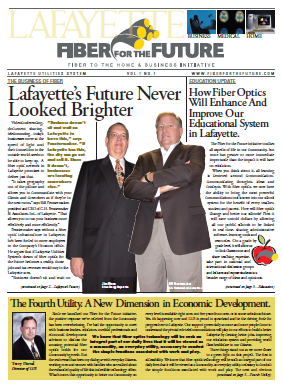Design Principles from Virginia's nDanville Open Access Network
The nDanville network of rural southern Virginia has long been a favorite of ours (previous coverage is available here). The network has helped Danville go from being notable for having the highest unemployment rate in Virginia to being ranked as the third top digital city in the nation, according to a recent article.
Danville's City Manager was honored by the Southern Piedmont Technology Council for developing the nDanville network:
Danville City Manager Joe King received the Chairman's Award for his leadership in advancing the development of a modern telecommunications infrastructure in the region, a key factor in Danville's economic development renaissance.King had been the director of the city-owned utility when it drew up plans for a fiber-optic network to be built incrementally until it could connect every home, business, and community anchor institution in Danville Utility's territory. At the time, Danville was suffering tremendously from the loss of tobacco and textile industries.
Today, the nDanville net-work connects hundreds of businesses, has sharply re-duced costs for local gov-ernment, health care provid-ers, and local schools, and has introduced more competition into the telecommunications marketplace.Danville Utilities has 44,000 electric meters, half of which are located in Danville (44 sq miles). The others are scattered across over 450 sq miles surrounding the city. The Southern Piedmont Technology Council serves the technology industry in Danville as well as nearby counties and another city. Even in 2004, many in Danville did not have broadband access to the Internet, as outlined in an early document explaining the network. Verizon barely offered DSL and Adelphia offered limited cable modem service. Andrew Cohill, a consultant assisting the project, has offered more background in a recent article of Broadband Communities.




 The newsletter also has a word from the Mayor (the inimitable Joey Durel) and quotes the Greater Lafayette Chamber of Commerce Broadband Policy. Finally, it also explains why the Lafayette Utilities System should build the network and cites successes from BVU in Bristol, Virginia.
Groups that are looking for strategies or a template for a web presence should check out
The newsletter also has a word from the Mayor (the inimitable Joey Durel) and quotes the Greater Lafayette Chamber of Commerce Broadband Policy. Finally, it also explains why the Lafayette Utilities System should build the network and cites successes from BVU in Bristol, Virginia.
Groups that are looking for strategies or a template for a web presence should check out